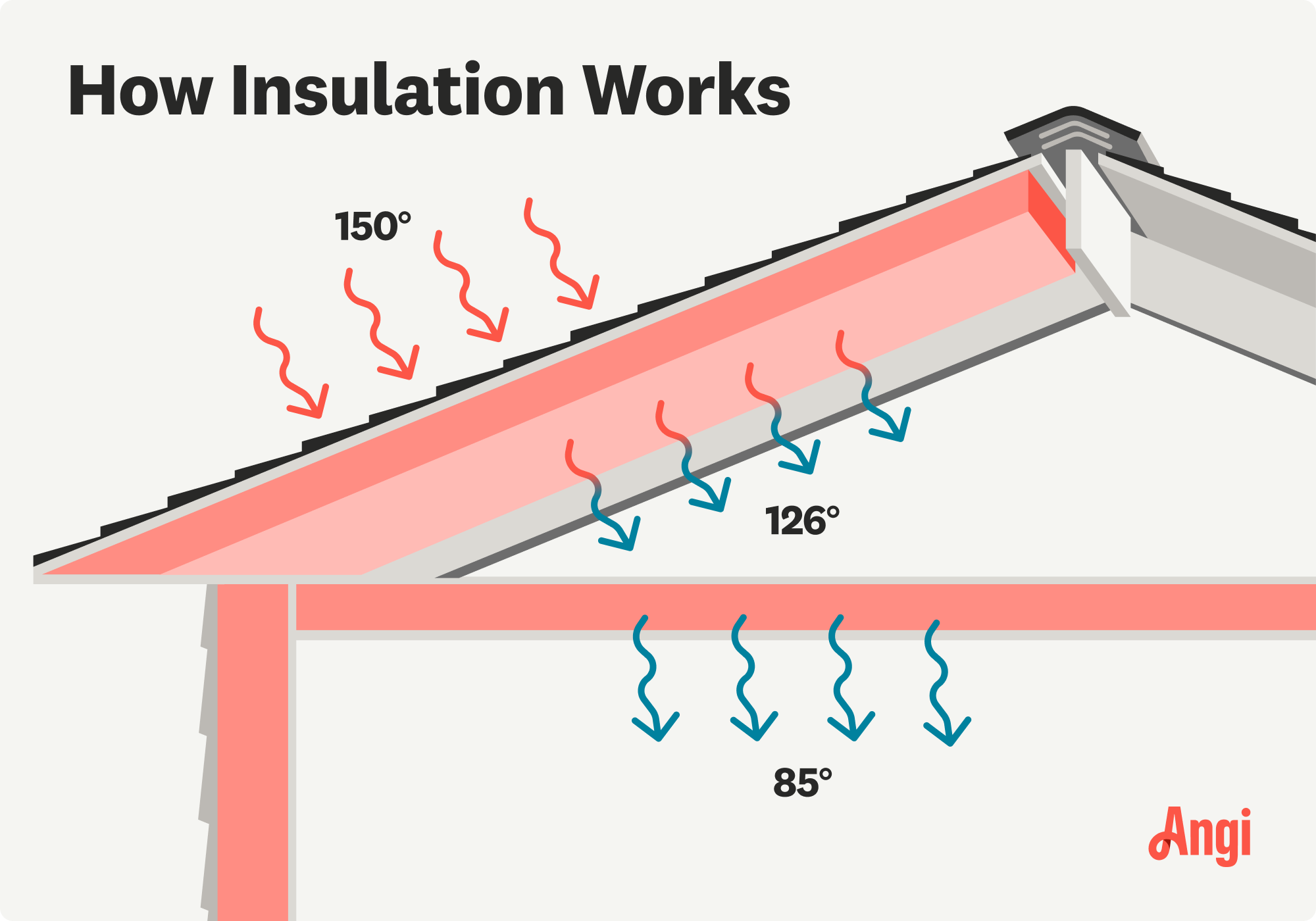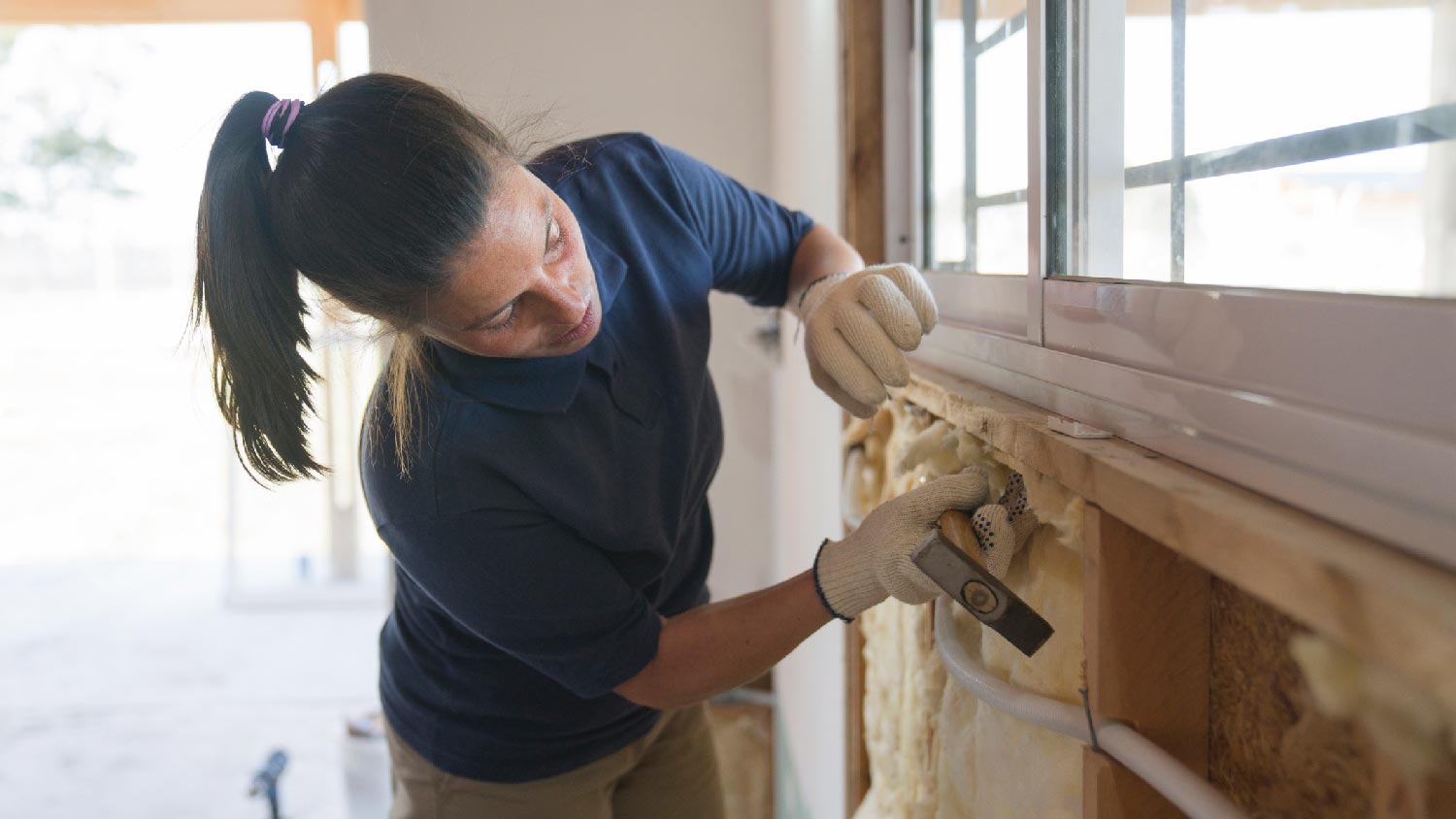How to Install Wall Insulation in Your Home
Keep the cold out and the heat in


Want to make your home more comfortable, lower your energy bills, and keep noise from traveling from one room to the next? Adding insulation is the way to go. Learn more about how to install wall insulation to keep your home cozy in the winter and chill in the summer.
Why Install Wall Insulation?
Adding insulation to your home's walls offers many benefits. Let's start with the big one: Insulation helps you regulate the temperature inside your home. In the winter, it keeps cold air outside, and in the summer, it keeps hot air from getting in.
At the same time, insulation also helps to seal up your home, preventing air leaks that can impact moisture levels. With better humidity control, you'll feel more comfortable.
Then there are the sound benefits. If you feel like you can hear everything that goes on in your home or that noise from the outside world is constantly seeping in, insulation will help to block it, providing better sound protection.
On the cost-savings side, a properly insulated home means you can set your thermostat to a cooler temperature in the winter or a higher one in the summer, lowering your utility bills and helping you use less energy.
How Much Does It Cost to Install Wall Insulation?
The cost of insulation depends on the type, your home's size, and whether you DIY or work with a professional. Where you install the insulation also affects the final price tag, with the average project cost coming in at $1,850.
In terms of insulation types, fiberglass tends to be the most budget-friendly, costing between $0.30 and $1.50 per square foot, while rockwool and wood fiber insulation are at the upper end of the price range.
How to Prep for Wall Insulation Installation

Before you start your insulation project, take some time to determine what you need and to detect any issues in your home.
Choose the right insulation: Insulation's R-value determines how well it prevents heat transfer. The R-value you need depends on the climate in your area.
Inspect your home: If you see signs of moisture problems, you'll most likely need to install vapor barriers. If there are air leaks, they should be filled and blocked before proceeding.
Add a cushion: Measure your walls and calculate how much insulation you'll need, then add a little extra to account for waste or mistakes.
Play it safe: Before you start, make sure you have the right safety gear, including gloves, goggles, and a mask. Long-sleeved shirts and pants are also a must, as the insulation material can be very irritating.
How to Install Wall Insulation
How you install wall insulation depends on the type of walls in your home and whether you're starting with finished or unfinished walls. If you're redoing a room or building your home from scratch, the walls will most likely still be open, meaning you can easily install batt or roll insulation. If you're adding insulation to pre-existing drywall or plaster walls, spray foam or loose-fill insulation is the way to go.
Install Insulation in Open Walls
If you're starting with open walls, roll or batt insulation is the best choice. Insulation batts are sold in lengths that are the same as the height of an average room, meaning less work for you in the end.
Before you begin, put on your protective gear, including your mask, goggles, and gloves.
To install roll or batt insulation, position it between two studs on the wall, with the brown paper side facing into the room. Oftentimes, roll or batt insulation perfectly matches the width between studs, so you don't have to cut it down. If you're using roll insulation, you'll need to cut it to a length that matches the height of your walls.
The insulation should fit snugly between the two studs. If you'd like, you can staple the brown paper facing the studs for extra security.
Install Insulation in Existing Walls
Do you live in an older home with plaster walls or existing drywall? You can still add insulation, and you don't even have to take down the current walls.
You can insulate existing walls with loose-fill or spray foam insulation. To do so, you'll need to drill holes in the wall at several points, slide a tube into the hole, and blow the insulation in using a blowing machine.
As with roll or batt insulation, it's important to wear safety equipment, including eye protection, a mask, and gloves, when working with blown-in insulation. Also, note that certain types of spray foam insulation can only be installed by an insulation professional.

Tips for Choosing Insulation

Insulation is definitely not one-size-fits-all. The type you choose will depend on your home's location and condition, and your budget will also influence your final decision.
Don't ignore the R-value: The R-value may be the most important number to know when choosing insulation. The EnergyStar program has a handy chart to help you choose the right R-value based on your local climate and your home's existing insulation.
Be aware of what's lurking behind your walls: Pipes and other obstructions can help you choose the right type of insulation. For example, pipes can get in the way if you're adding spray foam or loose-fill insulation and can make it impossible to install rigid foam insulation.
DIY vs. Hiring a Pro
Depending on the size and scope of your project, not to mention the type of insulation you want to install, hiring a professional insulation company near you to do the job is often the way to go. In fact, for certain types of insulation, such as open-cell spray foam, you need to hire a pro rather than try and DIY.
Frequently Asked Questions
Insulation can be easy to install, depending on the condition of your walls, but there are many safety considerations and potential challenges involved. For example, most types of insulation are made from materials that can cause irritation if inhaled or if they come into contact with your skin. Additionally, installing insulation incorrectly can actually make moisture issues in your home worse.
While you should always insulate ceilings and exterior walls, you don’t always have to insulate the interior walls of your home to maintain energy efficiency. However, there are benefits to insulating every wall, including improved soundproofing and energy efficiency throughout your home.
If you're replacing insulation, it's a good idea to remove the old insulation before adding new. This is especially true if the existing insulation has suffered from water damage or been exposed to pests. You also need to remove old insulation if you'll be installing a new and different type of insulation, such as trading roll or batt insulation for spray foam.




- Should You Remove Old Insulation Before Adding New Insulation?
- Buyer’s Guide on How to Choose Insulation for Your Home
- 7 Things to Know Before Installing Home Insulation
- What Type of Insulation Is Best for My Home?
- Who Installs Insulation? Call This Pro to Keep Your Home Comfortable
- 6 Reasons to Use Insulation for Your Bathroom Walls: Preventing Mold, Rot, and More
- Proper Insulation Can Help Keep Your Home Comfortable Year-Round
- 5 Types of Attic Insulation: Pros and Cons
- 10 Signs That Your Home Is Poorly Insulated
- Inspecting and Repairing Your Insulation: Follow This Checklist











